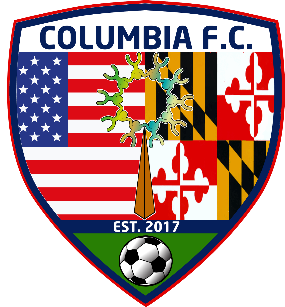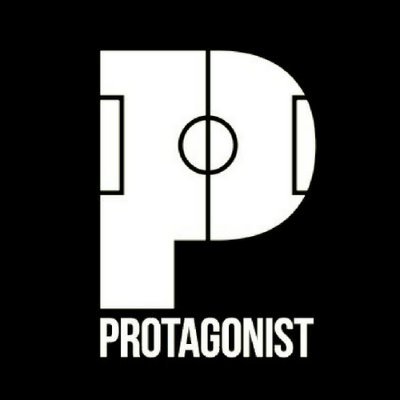CAFF and CONIFA - An Alternative to National Team Nonsense
In October of 2019 the Western Washington Premier League, a regional league in the state of Washington, announced its direct affiliation with the Cascadia Association Football Federation (CAFF). While CAFF was conceptualized as early as 2011, with fan-designed badges and kits emerging in 2012, the concept took a step towards organization in 2013 when interested members held a general meeting, elected a board of directors, and ratified bylaws. Anybody who lives in the bioregion known as Cascadia has at least heard the word, and probably could tell you a thing or two about where and what it encompasses; however, few outside of the Pacific Northwest could accurately speak on the subject.
The conversation on bioregionalism and the environmental movement could take us far away from the topic of soccer in the Pacific Northwest, but getting an overview on the topic of Cascadia will help us understand why a soccer federation was established. Conceptually, Cascadia stretches beyond conventional borders and includes stretches of Canadian British Columbia, Washington State, Oregon, and in some descriptions, it can include portions of Northern California, the Yukon, Idaho, Nevada, Montana, and Wyoming. “A bioregion is defined in terms of the unique overall pattern of natural characteristics that are found in a specific place.” However, depending the lens with which one is looking at a region, those borders are dynamic.
The supporter-created and staunchly maintained Cascadia Cup.
In the case of soccer, the focus of Cascadia largely includes BC, Washington, and Oregon – the idea of Cascadia as a soccer-specific territory was promulgated by the supporter groups of its largest soccer teams: (In alphabetical order) Portland Timbers, Seattle Sounders, and Vancouver Whitecaps. These vociferous and socially active organizations are not only responsible for tethering the love of their home to supporting their local soccer teams, regardless of league, but they created the first North American fan-run rivalry-specific table and trophy, The Cascadia Cup. They are activists inside as well as outside the stadium and the primary protagonists in the founding of a Cascadian-specific soccer team.
In 2013, shortly after the 2012 London Olympics, CAFF became organized and sent a representative to submit an application and to plead their case to the CONIFA board to be admitted to the international organization. CONIFA, the Confederation of Independent Football Associations, was itself founded in 2013 with the intent to bring non-FIFA sanctioned diasporas or underfunded nations together in the name of soccer. The qualifications for admittance include: ethnic or linguistic minority, indigenous group, cultural organization or territory which is not directly represented by a member of FIFA. Cascadia is joined in its unique status as an unrepresented nation and people in North America with Montreal and Hawai’i, both of which also have membership status in CONIFA. Though the specific circumstances behind every member of CONIFA is going to vary, the concept is that under-represented or diasporas of ethnic and linguistic minorities can come together to celebrate soccer, just at their larger FIFA-sanctioned neighbors do.
The squad representing CAFF in the 2018 CONIFA World Football Cup (Photo: CAFF via Facebook)
Though CAFF, and its respective FA, CONIFA, are relatively young they are absolutely essential in fighting the power consolidation and crippling corruptness so openly displayed by both US Soccer and by FIFA. These larger organizations flaunt their misogyny and disinterest in equity with reductive announcements about female athletes and a casual dismissal of rampant racism within the borders of their own member nations. Meanwhile, the base of organizations like CAFF openly fight against racism and gender inequality. Soccer has a long history of bringing together those that organize against tyranny, oppression, and wielding control for economic gain – it takes supporters of independent soccer to view something like CONIFA in the same light that they would look at grassroots soccer; full of its own shortcomings, but genuinely trying to make soccer available to all on a shoestring budget.
One of the shortcomings of CAFF, in its brief existence, has been its filling the roster with willing players from abroad instead of with players directly plucked from the ranks in its very own defined borders. Though an argument could be made for each player who started for Cascadia during its participation in the 2018 CONIFA World Football Cup and the federation’s subsequent friendly versus Darfur in Kent, Washington. Firstly, the Cascadian federation isn’t totally loaded with expendable cash and it’s far less expensive to hunt down players in England with roots to the Pacific Northwest of US to play in a series of international matches based in London. Secondly, you have to start somewhere – case in point is the exhibition CAFF hosted in July, 2019, where the majority of players came from the college and regional league ranks of Washington.
July 27, 2019 – Cascadia hosted Darfur in Kent, Washington in a CONIFA int’l exhibition (Photo by Paul Kahl, via PROSTAMERIKA.com)
The future of CONIFA and CAFF is busy, with upcoming matches at the Southern Frontier Cup in Surrey, England this May as well as the 2020 CONIFA World Football Cup in North Macedonia through June; the 10th ranked men’s team will be playing loads of soccer in the early summer. Additionally, Cascadia may be releasing a colorful addition to its pantheon of custom kits – just in time for those summer international matches. The hope is, that through their recently agreed upon affiliation with the WWPL, those brilliant new shirts will be worn by natives of the Pacific Northwest, plucked from the teams associated with the regional league – but be patient with them and understand their finances. It costs a lot to send a whole team of local lads around the world and significantly less to recruit European-based players with Cascadian ties to travel a third of the distance or less. Surely it wouldn’t hurt to buy one of their new kits when its released, to put some money in the coffers.
Another reason to consider buying shirts and scarves from CAFF is to help fund a proposed addition to the federation. CONIFA’s first ever women’s match was a friendly between Kibis Türk FF and FA Sápmi, which was played in Northern Cyprus on November 10th 2018. Since then CONIFA have added Kelly Lindsey as its Director of Women’s Football and she’s determined to host a Women’s World Football Cup as soon as possible. Kelly has created a solid, six core values and functions plan with the intent to recruit and incorporate a strategic team of women leaders “who would positively challenge, disrupt and transform the way the world looks at women’s sport, women’s football – in my mind – the ‘women’s’ game globally, that encompasses women, across all sectors, at all ages.” It would absolutely glorious to see Cascadia join the ranks of the women’s teams joining CONIFA and be leaders in giving women the respect and recognition they deserve which FIFA and US Soccer fail to recognize.
The first ever CONIFA women’s match was in November of 2018, here’s to hoping its one of many more to come and a catalyst for a CONIFA Women’s World Football Cup














